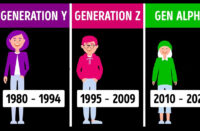PROVO, UT (March 16, 2017) — When Pokemon Go hit the market and took the world by storm, there were plenty of physical places that were caught in the crossfire. Based on nothing more than an unchecked algorithm, Pokemasters barged into backyards, trespassed on private land and flooded cemeteries and memorials, but not every place flagged by the app suffered. Many restaurants and small businesses unwittingly incorporated into the game actually benefited from the increased foot traffic. Some tech-savvy business owners even downloaded the app themselves to buy in-game objects to lure more Pokemon (and Pokemon hunters) to their doorsteps.
In the case of Pokemon Go, any boon for businesses was incidental. Business owners had no control over whether or not they were part of the game, and those that were were limited in their options on how to capitalize on it. Created purely for entertainment, Pokemon Go never unlocked the full potential its augmented reality and geo-caching technologies can offer businesses, but the game’s success and unparalleled level of engagement sent up a flag to marketers and advertising agencies.
The year 2016 saw a number of ground-breaking advertising campaigns that used augmented reality. Using the phone’s camera function to project a digital image into the real world, advertisers made cars drive down the sides of buildings, placed cartoon characters in the middle of Times Square and turned regular shopping windows into digital magazines. Because the ads were so novel and interactive, people began seeking out the advertising instead of just passively consuming it.
While many have started to see the benefits of augmented reality images in advertising, few have learned to leverage the technology into a fully immersive gaming experience like Pokemon Go.
Seek, a new app released last November, is now hoping to recreate that same type of adventure in a way that also benefits brands. Described as an adventure treasure hunting app, Seek provides users with a digital map that guides them to virtual treasure chests filled with real-life prizes and already boasts users in more than 60 countries. Businesses marketing themselves on the app can offer everything from small discount coupons to high-ticket prizes, and in addition to these rewards users have the chance to win cash each time they uncover a treasure chest.
“The level of engagement and interaction with the brand is unlike anything else out there right now,” said Seek’s founder and CEO Jon Cheney, “and because it’s a game and there are real prizes, people actually want to use the app.”
Because all treasure chests are placed manually and not with a random algorithm, Seek gives businesses more options to attract customers. A brand can choose to send treasure hunters to a location that relates to their product or to an actual storefront or event. Small businesses can also place“retail chests” right outside their stores. When someone using Seek opens this chest, they get discounts to use inside.
“The idea is that this is a win-win for both the app’s users and advertisers,” Cheney said. “Users get to go on a free adventure and win prizes, while businesses get engaging exposure and the chance to draw customers right to their doors.”
And, it would seem, investors agree with Cheney. Seek has already raised over $400,000 in growth capital over the last three months from some of Utah’s top early-stage investors.
According to analysts, those visionary investors in Utah might be onto something. A January report by Global Market Insights, the global Augmented Reality (AR) market size is forecast to grow at a compound annual growth rate (CAGR) of 80.8% per year between now and 2024, spurred by increasing adoption of the technology in e-commerce and retail, according to the report.







